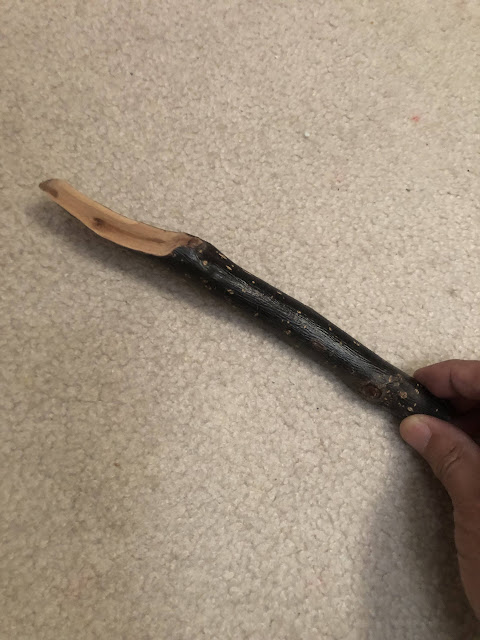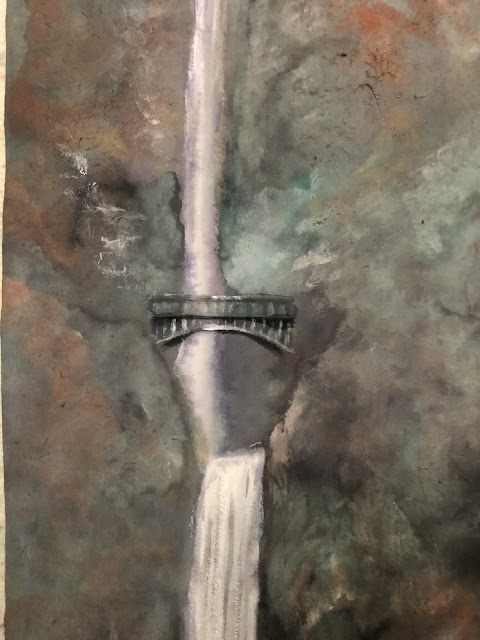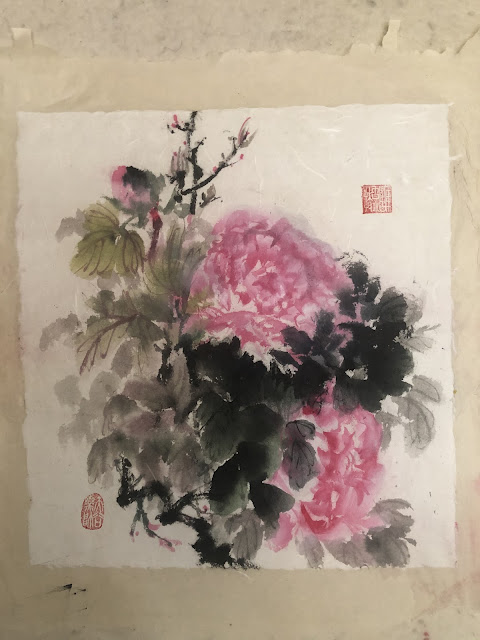A major part of the historic Old Columbia River Highway was reopened not long ago, iteafter the landslide was cleared away and damaged section repaired. One could again drove to the many different falls dotting the highway. I recently painted the Vista House from the Columbia River Gorge, and was itching to paint the Multnomah Falls again.
I must have tried 3 or 4 different iterations of the Multnomah Falls over the years and I realized that my approach to this subject matter was different each time. I was more or less bound by the Chinese brush doctrines before, despite my inadequacy and being a poor student. I decided that I was going to rid all shackles and just paint this time.
I chose a rather thick, very fibrous "leather" Xuan this time. The fibers added texture and the thick leathery Xuan was absorbent, yet allowed the water to float a bit before being assimilated, not unlike watercolor paper.
The first rule I broke was to paint the water of the Falls. Normally I would define the water with the negative void space. In fact from what I was taught, the using of a white color to paint water was frowned upon. Treating water by painting it was quite liberating. In fact that was the very first thing I did, painting the water of the Falls, using lighter grades of ink intermingled in the titanium white streaks to signal a flow.

As for the cliffs from which the falls clung to, I used broad dabs of a mixture of colors, setting the base tones of the landscape and accenting particular colors to set the stage for the features that I planned to portray, i.e. mist, sky, top of the cliff etc. At one of my painting lessons, I was asked to randomly splash red and phthalocyanine blue onto the Xuan paper and then tried to make some sense of the resulting splash pattern and create a landscape from these two colors. I was employing the same principle with this painting, albeit the mix was a lot tamer. There were tons of overlapping brushstrokes, totally against the etiquette of not covering the previous brushstrokes as prescribed in a proper Chinese brush painting method. Again, this was liberating. I felt like I was doing an oil painting, and my thick leathery Xuan was a perfect cohort and took the abuse with such poise.

Oh, did I also confess that I cheated, well sort of, by sketching out with charcoal my Falls and the bridge etc. on the back of my translucent Xuan first? It was much easier to follow the lines and paint on the top side, especially for the water.
I think some of the charcoal from the back of the paper might have gotten incorporated into the paper once the moisture from the top side reached it. This actually worked out great, especially as far as the edges of the Falls and the silhouette of the bridge was concerned. It added depth to the brushstrokes and rendered a 3-D effect. Something I might need to explore in the future and warrant further experimentation.
The painting actually didn't look half bad at this point. I could have passed it for a blurry, mystic interpretation of the Falls? But that wasn't what I set out to do, so forge on!
I intended a fall color for the Falls, thus the yellow dots were the base color for my cinnabar.
I seemed to have run into a dead end. I didn't like the painting at this stage. It felt like the landscape was dotted with bouquets of flowers instead of a fall foliage. I wished I had stopped at the stage when the painting looked kind of fuzzy.
Time to rest. Give the painting a rest, Give myself a rest.





















